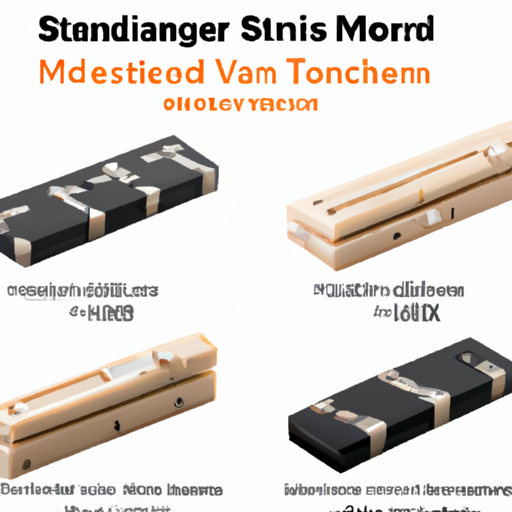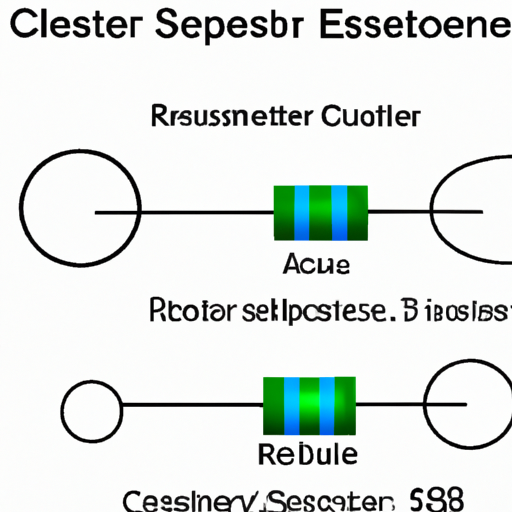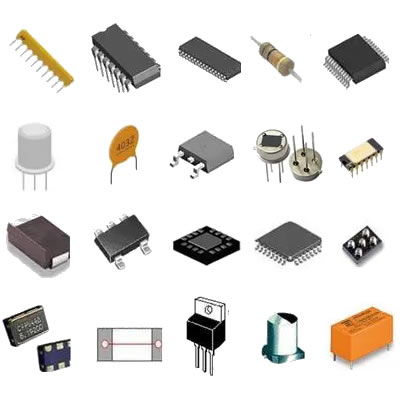What are the comparisons and differences between mainstream Shanghai resistor models?
Comparisons and Differences Between Mainstream Shanghai Resistor Models
I. Introduction
Resistors are fundamental components in electronic circuits, serving the crucial role of controlling current flow and voltage levels. They are essential for ensuring that electronic devices function correctly and safely. In the global market, Shanghai has emerged as a significant hub for resistor manufacturing, producing a variety of models that cater to different applications and industries. This article aims to compare and contrast mainstream Shanghai resistor models, providing insights into their specifications, performance, and suitability for various applications.
II. Understanding Resistor Basics
A. Definition and Function of Resistors
A resistor is a passive electronic component that resists the flow of electric current, creating a voltage drop across its terminals. This property is essential for controlling the amount of current that flows through a circuit, protecting sensitive components from damage and ensuring proper operation.
B. Types of Resistors
Resistors can be categorized into several types, including:
Fixed Resistors: These have a constant resistance value and are the most common type used in circuits.
Variable Resistors: These allow the resistance to be adjusted, such as potentiometers and rheostats.
C. Key Specifications
When evaluating resistors, several key specifications are important:
Resistance Value: Measured in ohms (Ω), this indicates how much the resistor opposes current flow.
Tolerance: This specifies the accuracy of the resistance value, usually expressed as a percentage.
Power Rating: Measured in watts (W), this indicates the maximum power the resistor can dissipate without failing.
Temperature Coefficient: This indicates how much the resistance changes with temperature, which is crucial for maintaining performance in varying conditions.
III. Overview of Shanghai Resistor Models
A. Brief History of Resistor Manufacturing in Shanghai
Shanghai has a rich history in electronics manufacturing, with a focus on producing high-quality components, including resistors. Over the years, several brands have established themselves as leaders in the market, known for their innovation and reliability.
B. Introduction to Mainstream Shanghai Resistor Brands
1. **Brand A**: Known for its extensive range of high-precision resistors, Brand A has built a reputation for quality and reliability.
2. **Brand B**: This brand focuses on cost-effective solutions, offering a variety of resistors suitable for mass production.
3. **Brand C**: Specializing in high-performance resistors, Brand C is favored in applications requiring precision and durability.
C. Market Position and Reputation of These Brands
Each of these brands has carved out a niche in the market, with Brand A being recognized for its premium products, Brand B for affordability, and Brand C for high-performance applications. Their reputations are built on years of experience and customer satisfaction.
IV. Comparison Criteria
To effectively compare the mainstream Shanghai resistor models, we will use several criteria:
A. Performance Characteristics
1. **Resistance Range**: Different brands offer varying resistance ranges, which can affect their applicability in different circuits.
2. **Tolerance Levels**: The precision of the resistors varies, with some brands providing tighter tolerances than others.
3. **Power Ratings**: The ability to handle power without failure is crucial, especially in high-load applications.
B. Construction and Materials
1. **Composition**: Resistors can be made from various materials, including carbon film, metal film, and wire-wound. Each material has its advantages and disadvantages in terms of performance and cost.
2. **Size and Form Factor**: The physical dimensions of resistors can impact their integration into circuit designs, especially in compact devices.
C. Reliability and Durability
1. **Temperature Stability**: Resistors must maintain their performance across a range of temperatures, making temperature stability a critical factor.
2. **Lifespan and Failure Rates**: The longevity of a resistor is essential for reducing maintenance costs and ensuring reliable operation.
D. Cost and Availability
1. **Price Comparison**: The cost of resistors can vary significantly between brands, influencing purchasing decisions.
2. **Distribution Channels**: Availability through various distribution channels can affect how easily customers can obtain the resistors they need.
V. Detailed Comparison of Mainstream Shanghai Resistor Models
A. Brand A
1. **Key Specifications**: Brand A offers a wide range of resistors with resistance values from 1Ω to 10MΩ, tolerances as low as 0.1%, and power ratings up to 2W.
2. **Advantages and Disadvantages**: The main advantage of Brand A is its high precision and reliability, making it ideal for sensitive applications. However, its products tend to be more expensive than competitors.
3. **Typical Applications**: Commonly used in medical devices, aerospace, and high-end audio equipment.
B. Brand B
1. **Key Specifications**: Brand B provides resistors with resistance values from 10Ω to 1MΩ, tolerances of 5%, and power ratings up to 0.5W.
2. **Advantages and Disadvantages**: The primary advantage of Brand B is its affordability, making it suitable for mass production. However, the lower precision may not be suitable for high-end applications.
3. **Typical Applications**: Widely used in consumer electronics and general-purpose applications.
C. Brand C
1. **Key Specifications**: Brand C specializes in high-performance resistors with resistance values from 1Ω to 100kΩ, tolerances as low as 0.5%, and power ratings up to 5W.
2. **Advantages and Disadvantages**: The advantage of Brand C is its high performance and durability, suitable for demanding environments. However, the cost is higher compared to Brand B.
3. **Typical Applications**: Often used in industrial applications, automotive electronics, and high-temperature environments.
VI. Case Studies
A. Application in Consumer Electronics
In consumer electronics, Brand B resistors are often used due to their cost-effectiveness. For example, in smartphones, where space and cost are critical, these resistors provide adequate performance without breaking the bank.
B. Use in Industrial Settings
Brand C resistors are preferred in industrial settings where reliability is paramount. For instance, in manufacturing equipment that operates in high-temperature environments, these resistors ensure consistent performance and longevity.
C. Performance in High-Temperature Environments
Brand A resistors are often utilized in aerospace applications, where precision and temperature stability are crucial. Their ability to maintain performance under extreme conditions makes them a top choice for engineers in this field.
VII. Conclusion
In summary, the comparison of mainstream Shanghai resistor models reveals distinct differences in performance, construction, reliability, and cost. Brand A stands out for its precision and reliability, making it suitable for high-end applications. Brand B offers affordability, making it ideal for mass production, while Brand C excels in high-performance scenarios.
When selecting the right Shanghai resistor model, it is essential to consider the specific requirements of the application, including performance characteristics, budget constraints, and environmental conditions. As technology continues to evolve, the future of resistor manufacturing in Shanghai looks promising, with advancements in materials and production techniques likely to enhance the performance and reliability of these critical components.
VIII. References
1. Academic papers and articles on resistor technology and applications.
2. Manufacturer specifications and datasheets for Shanghai resistor brands.
3. Industry reports and market analysis on electronic components and resistors.
This comprehensive exploration of mainstream Shanghai resistor models provides valuable insights for engineers, designers, and purchasing professionals looking to make informed decisions in their electronic circuit designs.




